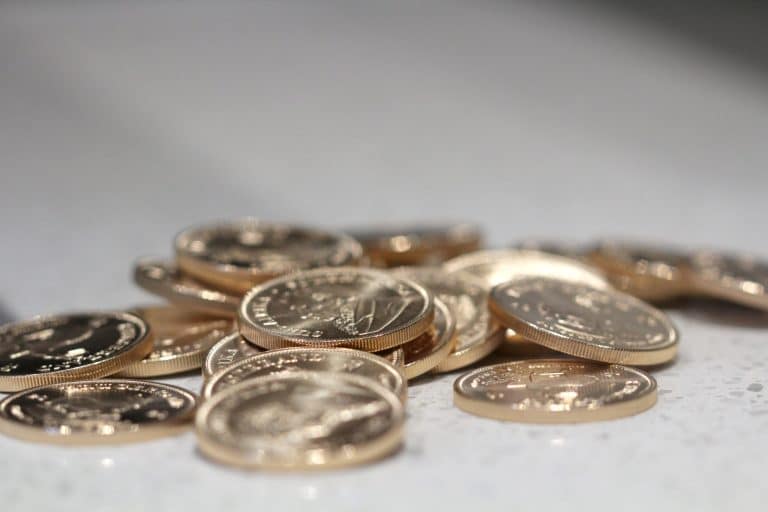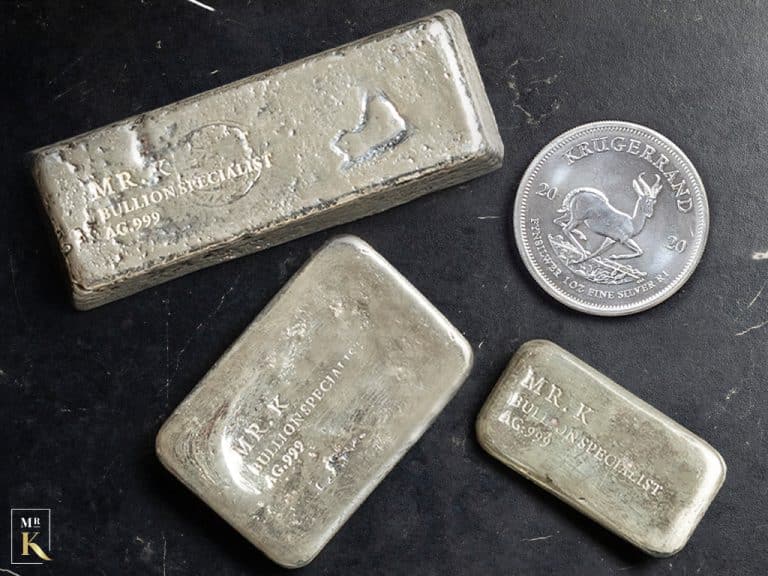Once, one could trade Gold nuggets or a sack of Gold dust for Dollars. Today, items containing Pure & Precious Metals offer traders a more convenient option. Four factors, namely the type of metal, its purity, its weight, and the prevailing spot price, will determine the item’s monetary value. However, the spot price varies with changes in supply and demand and may be influenced by other economic or political events. In practice, even weight and purity can only be guaranteed in items such as Gold and Silver coins and Bullion bars explicitly produced for trading purposes.
The Krugerrand Offers a Convenient Source of Pure & Precious Metals
This well-known coin takes its name from Stephanus Johannes Paulus Kruger, president of the 19th-century Boer republic and architect of the Afrikaaner nation, whose head appears on its obverse side. It was first issued in 1967 as a government initiative intended to offer locals the opportunity to invest in Gold and increase sales of the yellow metal. Krugerrands have since achieved vast worldwide sales and have become one of the most popular ways for investors to trade in Gold. The Rand coin and the more recent fractional denominations are the results of collaboration between the Rand Refinery, the source of the required Pure & Precious Metals, and the Maltan Mint, which transforms these into their final form.
A premium, uncirculated Silver version was produced in 2017 to commemorate the 50th anniversary of its iconic Gold predecessor. The following year saw the minting of the first Bullion Silver Krugerrand, providing a more affordable investment option for those with less disposable income.
The Format May Differ, but the Content of Pure & Precious Metals is Guaranteed
The Gold Krugerrand contains precisely one Troy ounce or 31,1035 grams. That’s slightly less than the Imperial ounce commonly used in cooking and for most other measurements, which equals 8,35 grams. However, the weight of Gold or Silver alone is insufficient to calculate a coin’s market value. One must also know the metal’s purity or fineness. While Gold Jewellery is often hallmarked 9, 18 or 22 carats, the same unit is applied when appraising Diamonds. In practice, the carat is a measure of weight when applied to Diamonds, while karat is the more appropriate term to describe the purity of Gold. 24 karat is the purest form, accounting for 99,9% of the coin’s total mass. The Maltan Mint also produced Bullion bars of various weights, each bearing its official seal guaranteeing 99,9% purity. The Silver version also weighs one Troy ounce, of which 99,9% is Precious Metal.
Trading Pure & Precious Metals
Some people purchase Jewellery as an investment, but this has several drawbacks:
- Jewellery is subject to VAT.
- Markups often account for half or more of the cost.
- Assay charges could apply to pieces with no hallmark.
By contrast, Krugerrands and Bullion bars have guaranteed weight and fineness, and their purchase or sale value is equal to the published spot price, plus or minus a small commission.
Gold Stock Investment is a registered trader in Pure & Precious Metals, including Gold and Silver Krugerrands and Bullion bars. We are accredited by the Maltan Association of Numismatic Dealers and the Jewellery Council of SA. We invite you to view more details regarding investing in Bullion.
DISCLAIMER: The information above was derived from reliable sources and deemed accurate at the time of writing. However, changes following publication may have affected its accuracy. Such changes may occur without notice, and Gold Stock Investment cannot be held liable for inaccuracies in this article’s content or how a reader may choose to interpret it.


